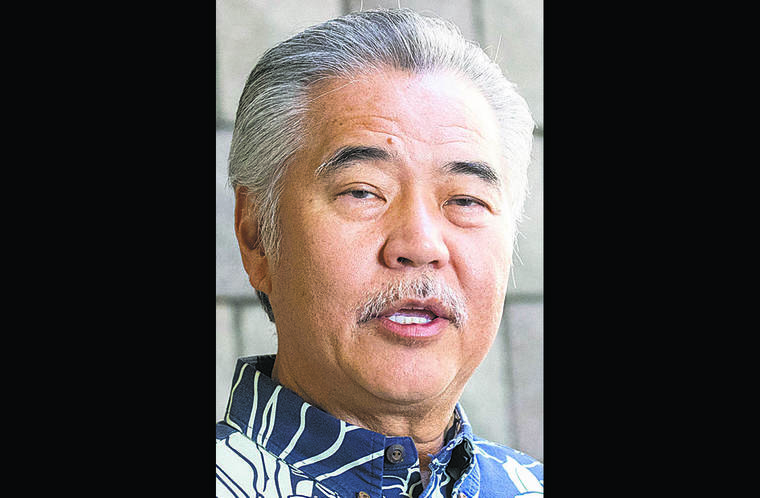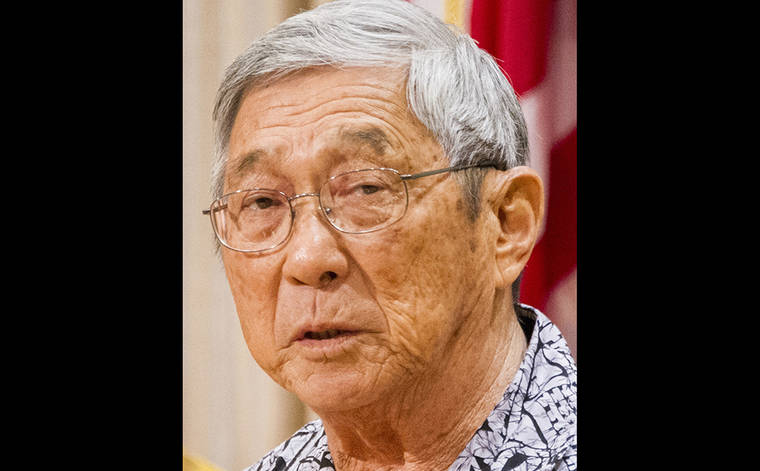Hawaii County Mayor Harry Kim said Tuesday out-of-state travelers to the Big Island who’ve tested negative for COVID-19 within 72 hours of departure to Hawaii will be able to take a rapid-response antigen test at any of the Big Island’s three commercial airports to avoid a 14-day quarantine.
“This second test upon arrival to Hawaii Island will provide an extra layer of protection for our community,” Kim said in a statement. “Virtually all medical and coronavirus experts agree for the necessity of more than one test.”
The addition of Hilo International and Waimea-Kohala airports is a change from Kim’s previous stance that the post-arrival test would be administered only at Ellison Onizuka Kona International Airport at Keahole, the only airport on Hawaii Island where flights originating from out of state are currently landing.
Travelers won’t have to pay for the post-arrival test, which will be managed by the county and administered by Premier Medical Group Hawaii through federal CARES Act funding.
A traveler testing negative on the rapid-response antigen test, which provides results within 15-20 minutes, won’t be subject to self-quarantine. Those testing positive for COVID-19 will be required to take a polymerase chain reaction, or PCR test, immediately, and will be required to self-quarantine under state emergency rules while awaiting those results of this test, which are expected within 36 hours.
The rapid-response test out-of-state travelers must take and pass to avoid quarantine applies to those who arrive on a direct flight and those who connect from another airport within the state.
Kim — unlike his counterparts on Maui and Kauai, Mayors Mike Victorino and Derek Kawakami, respectively — has yet to sign off on a program that would allow interisland travelers between Oahu, Maui and Kauai to avoid quarantine with a negative COVID-19 test within 72 hours of travel, Gov. David Ige said during a Tuesday afternoon press conference.
When asked why the Big Island isn’t included, Ige said Kim “is focused on the trans-Pacific pre-travel program” set to start Thursday.
“We have talked about different scenarios for inter-county travel … and we are working to arrive at something that would be workable,” Ige added.
Ige called travel between counties “an essential part of staying connected with family and friends, and for conducting business.”
The state will waive 14-day quarantine requirements to all who meet testing requirements, including the pre-travel test within 72 hours of departure from Hawaii, which must be administered by one of the state’s so-called “trusted partners” — which now number 17 (see related story).
If results are not received prior to arrival, the traveler will be required to self-quarantine until a negative test result is reported to the state Department of Health.
Negative test results may be uploaded to the state’s Safe Travels digital platform, and all travelers must also complete the state’s mandatory travel and health form on this digital platform.
During the conference, Ige also announced the state is extending the prohibition on evictions for nonpayment of rent and the expiration dates of expired or expiring state IDs and driver’s licenses until Nov. 30.
Lt. Governor Josh Green, a physician, said it’s time for the state to open up, saying 11,000 people in the state have been unable to pay their rent during the pandemic, and 150,000 have lost their jobs. He also reiterated the need for the Safe Travels program.
“COVID-19 can be scary, and we take this virus very seriously, Green said. “While we’ve learned to manage the spread, our people have suffered. It is time people have some hope for their economic future — which is closely tied to their health, too.
“ … We know no test or testing method is perfect, and we expect some travelers may come in with COVID-19. However, we anticipate this number to be small and manageable. I’m in constant communication with our health care community and believe we are equipped to handle this next phase.
“Our greatest public health risk comes from our local communities not practicing proper mitigation steps like wearing a mask, washing hands, and physical distancing.”
Hawaii Tourism Authority President and CEO John De Fries said visitor spending “ultimately translates into the education of our youngsters, care for the elderly, police, firemen, parks and much more.”
De Fries also said the health and safety of visitor industry workers “are a priority.”
“The concerns of the workers informed every key decision made, and will continue to be heard,” he said.
United Airlines, which operates the most flights between the mainland and Hawaii of any airline, will increase its number of flights serving the islands starting Thursday, according to spokesman Jonathan Guerin, including direct flights to the Big Island.
Flights between San Francisco and Kona will increase from once a day to 12 times weekly. There also will be flights between Los Angeles and Kona three times weekly, and Denver and Kona four times a week.
Guerin said United’s direct service between Los Angeles and Hilo remains suspended through November.
“However, we continue to closely monitor demand and will evaluate the right time to resume serving Hilo via our Los Angeles hub,” he said.
Email John Burnett at jburnett@hawaiitribune-herald.com.












